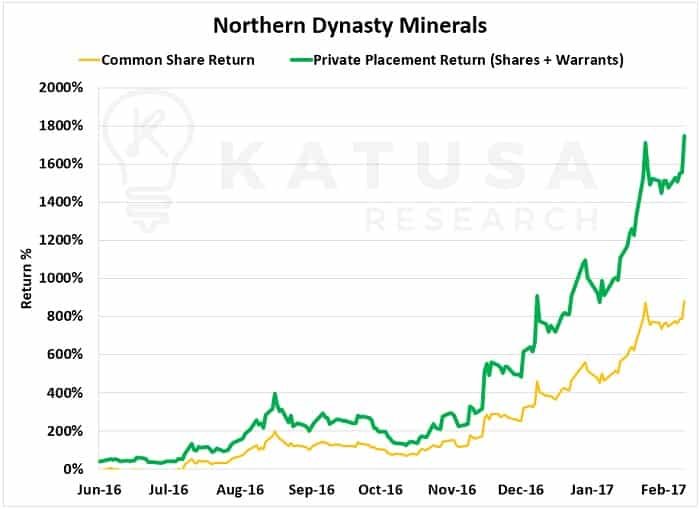
The Black Card.
Going “Wheels Up”.
The Knickerbocker Club.
Skull and Bones.
Bilderberg.
The world is filled with exclusivity.
There is the high-performance express lane that grants privileges to members. And then there is the lane for everyone else.
The schoolyard principles continue into adulthood. You can’t play with us because you’re different. Or, simply, we don’t want to let you into our club.
Members of preferential clubs get special privileges. They get perks. They get superior treatment.
There are special clubs for when you fly. Buy the expensive ticket and you bypass the lines. After taking your seat, you sip champagne instead of getting elbowed by the fat guy in coach with a strong body odor.
Whether you’re traveling, entertaining your kids, or anything else, getting the perks and skipping to the front of the line is good fun. You deal with less hassles. Things happen for you faster and easier.
Given all this, it’s no wonder these types of clubs exist for investors.
Members earn bigger returns in a shorter time. I’ve even seen members of this club turn every $10,000 invested into $100,000 in just a few years (a 900% return).
I’m a member of such a club… and it’s served me very well over the last decade and a half. It’s made me incredible returns and been instrumental in accelerating my net worth by millions of dollars.
Today I want you to join the club by introducing to you to one of the best vehicles to make money in resources, Private Placements.
Why Top Investors Love “Private Placement” Deals
Despite their power, private placements are one of the most exclusive and misunderstood financial vehicles on the planet.
Yet, Private Placements are in high demand with high net worth investors and fund managers. Private Placements – or PP’s – allow you to buy large blocks of stock at a set price and at a discounted price to market. And if you know how to structure a PP, or follow someone who does, you may get a warrant kicker which makes the deal even better.
However, because these deals do not take place on regular stock exchanges, you can’t look up the deal info on websites like Yahoo! Finance or Google.
Also, the money involved in a private placement is often tiny compared to the money involved in a big name IPO like Tesla Motors.
Many private placements raise $5 million to $25 million. This is less than 3% of a heavily-publicized tech IPO that raises a billion dollars.
That’s why you’ll never see these deals featured on the front page of the Wall Street Journal.
It’s why people on mainstream financial television never talk about them.
This lack of mainstream popularity turns many folks off.
Most people simply aren’t comfortable with investments they don’t see splashed over mainstream magazine covers.
But if you’re like me, you realize this is a GREAT thing.
If you’re like me, you realize investing alongside the masses is a sure way to lose money… while paying very high fees to brokers, money managers, and bankers.
I love the fact that private placements are a small and uncovered area of the market. It means there aren’t millions of investors reading the same news stories and piling into these deals. It also means these deals are off the radar of billion-dollar investment funds.
Said another way, it means private placements are extraordinary opportunities for the small group of investors who are willing to do the necessary legwork and research to understand them.
Having said all that, investing in private placements isn’t easy.
And thanks to the regulators, it’s not for everyone. If you aren’t accredited, the only way to get into a Private Placement is by either working for the company or using the “friend and family” exemption. Who you know does matter for Private Placements.
And it’s what separates the “in crowd” with those still waiting outside in the cold.
Unless you work for the company or use the “friends and family” exemption, to participate in a PP you must be an “accredited investor.”
The term is slightly different around the world, but in the U.S. and Canada…
An accredited investor is someone who can demonstrate an annual income that exceeded $200,000 (or $300,000 with a spouse) for the last two years and can reasonably expect to earn the same or more for the current year.
You can also be considered an accredited investor by having a net worth of over $1 million.
In other words, you have to have a quite a bit of money to be considered an “accredited investor.”
Where do Private Placements Come From?
When natural resource firms need to raise money to do things like drill for oil, explore for gold or uranium, or develop a gold mine, they often do it through “private placements”. And they do this to raise money from high net worth investors who understand the opportunity and the risks.
A private placement also allows a company to sell shares to investors that are not listed on the stock exchange yet but will be shortly.
In a private placement, companies typically offer shares at a discount to the current market value. This discount is often in the 5% – 25% range. The price of shares and the dollar amount raised is negotiated in advance.
For large investors, negotiating the price and the amount invested in advance is a huge positive. It means they can acquire large blocks of shares without dealing with the market’s day-to-day fluctuations.
It means the share price can’t “run-away” and shoot 25% – 50% higher while a large investor is trying to acquire a position.
Being able to acquire a large number of shares in a company at a set discounted price is enough to make private placements a very attractive investment vehicle for large investors.
But there’s another aspect of private placements that makes them even better. It’s like icing on the cake.
The Powerful Kicker in a Private Placement – Warrants
That icing is called “warrants.”
A private placement offering can also include stock options in the deal. These stock options are called “warrants.”
Warrants act like stock options in that they allow investors to buy a stock at a predetermined price in the future. They have finite lifespans.
Some warrants expire in one year.
Some expire in 2, 3, or even 5 years.
And just like stock options, warrants can soar hundreds of percent in value when a company does well.
Warrants have the ability to supercharge your return.
I’ll give you areal life example:
A few years back, I put my colleague and friend Brent Cook into a private placement where he got both shares and warrants alongside me and other investors. I’m teasing Brent because this company is also his favorite very large, undeveloped copper-gold-porphyry stock to talk about publicly.
In the May 2016 Northern Dynasty Private Placement, investors (or speculators) bought shares in the company at CAD$0.45 per share. The unit also came with a warrant (which Doug Casey and Rick Rule refer to as the Katusa Warrant).
This was a full five-year warrant which was not only exchangeable for 1 common share at CAD$0.65 per share but also had the benefit of being listed and free trading with its own ticker symbol.
Less than 18 months later, in January 2017, Northern Dynasty shares were trading above $4 per share.
Now if you had just bought stock in the open market, you would have done very well. Selling at CAD$4 per share would have made you a profit of 789%.
But if you had invested in the Private Placement, your returns were supercharged.
When the shares of Northern Dynasty were trading at $4 per share, the warrant traded for $3.45 per share. Cashing out up there would have netted you an additional 767%. Making your total return a staggering 1,556%.
Not all private placements are lucrative home runs like this one used as an illustrative, yet real-world example. But you can see that if one out of ten hit big, it more than makes up for the bulk of your losers. And you will have losses in speculating in the junior resource sector.
The point I’m trying to get across is that you can see that the addition of a warrant made the investment much, much more profitable.
That’s the power of a warrant… and it’s why they are such an attractive component of private placements.
Because the resource markets are so bad right now, those who are interested in private placements and have available cash have little competition on the best private placements. This means you can cut the best terms on a deal, which means a Katusa Warrant in the private placement.
As I mentioned, a modest $25,000 private placement investment can grow into $250,000 or more when a resource firm achieves success and you own warrants along with the stock.
Because you can buy the private placement at a discount AND get a warrant, the right structured deals in the best companies are in high demand with wealthy individual investors and larger institutional investors.
This demand makes private placements a way for companies to raise large amounts of money quickly and easily, with the best investors in the business.
But the best Private Placements are never easy to get into.
You have to be an extremely wealthy individual with multiple high-profile brokers that have access to the best private placements.
Or you have to be buddies with guys like Lukas Lundin, Frank Giustra, Ross Beaty, Pat DiCapo, or Richard Warke.
If you’re outside this inner circle, the chances of getting in on the next big Private Placement put together by a guy named Frank, Ross, or Richard is close to zero.
The Katusa Advantage – Level the Playing Field
Investing in private placements isn’t easy.
To get into the best deals, you have to know all the major players personally in Vancouver, the heart of global resource finance.
You have to know the bankers, brokers, CEOs, and entrepreneurs.
You have to visit the projects in person. And you have to constantly take the pulse of the market and the deals being lined up. In short, it’s a full-time job.
But why should rich investors have all the advantages?
Screw that.
I started out with very humble roots. I went to university on an academic scholarship, started out as a high school math teacher and grinded my way up the investment ladder.
My goal with Katusa Research has always been to level the playing field between those high-profile deal makers and the everyday investor. And my subscribers see it happening in real time.
I am 100% focused on finding the best deals in the resource sector and sharing them with my subscribers. On numerous occasions, I’ve managed to bring private placements to my subscribers (at the same price and terms as key insiders, financiers, and even billionaires).
I take zero compensation for this.
I don’t get any kickbacks, stock options, or cheap stock gifted to me in offshore accounts.
My goal is to make my subscribers wealthy, the only way I know how. Which is by working hard, meeting everyone in the business, and structuring the best Private Placements possible (which I am usually the lead order, i.e. the biggest investor, in).
And now you know the incredible power of Private Placements.
Regards,
Marin Katusa







